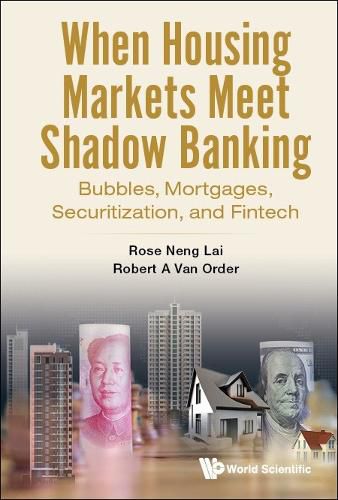Readings Newsletter
Become a Readings Member to make your shopping experience even easier.
Sign in or sign up for free!
You’re not far away from qualifying for FREE standard shipping within Australia
You’ve qualified for FREE standard shipping within Australia
The cart is loading…






This title is printed to order. This book may have been self-published. If so, we cannot guarantee the quality of the content. In the main most books will have gone through the editing process however some may not. We therefore suggest that you be aware of this before ordering this book. If in doubt check either the author or publisher’s details as we are unable to accept any returns unless they are faulty. Please contact us if you have any questions.
This book contends that the housing markets and shadow banking have been involved in a kind of 'dance' over the last two decades. It traces this dance to be between the roles of mortgage markets since the 1980s in both the US and China and the developments of securitization and 'shadow banks.' It gives side-by-side comparisons between the two and suggests that house price dynamics have been similar, but also quite different. Both had booms. The US had a bubble that burst around 2007 - after prices became quite high relative to rents and then crashed. However, Chinese housing markets, which had a similar run-up, did not have a burst bubble. Rather, the rising property values appear to have been from space becoming more valuable as reflected in rent growth. In the US, prices chased prices; in China, prices chased rents.Mortgage markets were more complicated, beginning with the securitization in the US, and the rise of shadow banks that both led and followed. The US used shadow banks to hold pieces of securitization deals and funded them with deposit-like debt. These pieces were fragile and their collapse caused 'silent runs,' which were instrumental in the ensuing crash. China's shadow banks were more like traditional intermediaries, unattached to securitization. Their liabilities were mostly not short-term, as was the case with US shadow banks. So, runs were not a problem, but getting the market to work efficiently was.The markets have evolved. And while the music has changed, the dance is not over.
$9.00 standard shipping within Australia
FREE standard shipping within Australia for orders over $100.00
Express & International shipping calculated at checkout
This title is printed to order. This book may have been self-published. If so, we cannot guarantee the quality of the content. In the main most books will have gone through the editing process however some may not. We therefore suggest that you be aware of this before ordering this book. If in doubt check either the author or publisher’s details as we are unable to accept any returns unless they are faulty. Please contact us if you have any questions.
This book contends that the housing markets and shadow banking have been involved in a kind of 'dance' over the last two decades. It traces this dance to be between the roles of mortgage markets since the 1980s in both the US and China and the developments of securitization and 'shadow banks.' It gives side-by-side comparisons between the two and suggests that house price dynamics have been similar, but also quite different. Both had booms. The US had a bubble that burst around 2007 - after prices became quite high relative to rents and then crashed. However, Chinese housing markets, which had a similar run-up, did not have a burst bubble. Rather, the rising property values appear to have been from space becoming more valuable as reflected in rent growth. In the US, prices chased prices; in China, prices chased rents.Mortgage markets were more complicated, beginning with the securitization in the US, and the rise of shadow banks that both led and followed. The US used shadow banks to hold pieces of securitization deals and funded them with deposit-like debt. These pieces were fragile and their collapse caused 'silent runs,' which were instrumental in the ensuing crash. China's shadow banks were more like traditional intermediaries, unattached to securitization. Their liabilities were mostly not short-term, as was the case with US shadow banks. So, runs were not a problem, but getting the market to work efficiently was.The markets have evolved. And while the music has changed, the dance is not over.